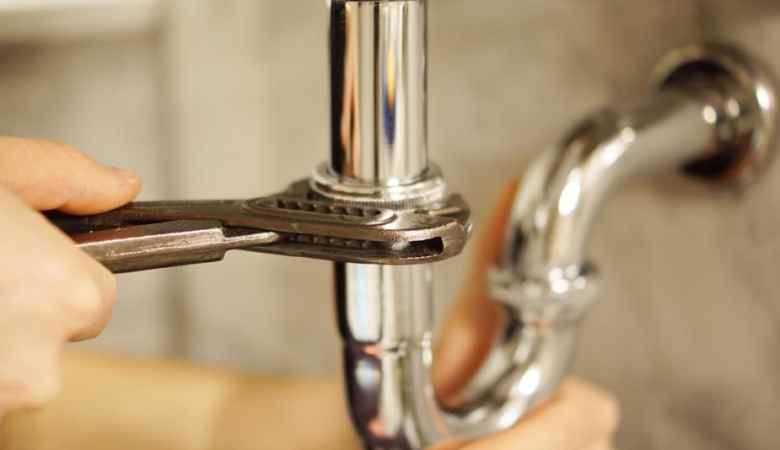Cast iron plumbing was once the go-to material for drainage systems, especially in homes built before the 1970s. Known for its strength and durability, it can last several decades. But that lifespan isn’t unlimited. Over time, even the toughest cast iron begins to break down, often without obvious warning signs at first.
If your home still relies on cast iron plumbing, ignoring the early red flags can lead to messy and expensive consequences. So, how can you tell when it’s time to call in a professional? Here’s what to look out for.
Table of Contents
The Age of Your Pipes Matters
Cast iron pipes typically last between 50 and 100 years. However, that wide range depends on a few factors, such as how they were installed, water quality, and environmental conditions. If your home is over 50 years old and has never had the drainage system replaced or inspected, the risk of hidden damage is high.
Even if things seem fine on the surface, corrosion inside the pipes could be building up, waiting to cause a blockage, burst, or leak.
Rust and Discoloration
If you notice rust-colored water or reddish stains in your sink, toilet, or bathtub, don’t ignore it. This isn’t just about water aesthetics. That discoloration can be a sign that the inside of your cast iron pipes is deteriorating.
Rust forms when the metal reacts with oxygen and moisture. And once it starts, it spreads. Left too long, it can eat right through the pipe wall, causing leaks or even complete failure.
Cast iron pipe repair is often possible in the early stages of rust damage, but the longer the corrosion goes unchecked, the more likely it is that full replacement will be needed. Spot repairs might buy time, but they won’t stop rust from advancing through the rest of the system.
Another related sign is brown water backing up during heavy use. That’s a serious red flag.
Unusual or Frequent Drain Clogs
It’s normal to deal with the occasional clog. Hair, grease, and food waste can cause temporary blockages. But if you’re dealing with slow drains, gurgling sounds, or standing water more often than not, there might be a bigger issue hiding underneath.
In aging cast iron pipes, corrosion causes the interior surface to become rough and flaky. This roughness grabs hold of waste and debris that would normally pass through, creating frequent clogs and backups.
It’s not just a plumbing inconvenience; it’s a sign that your pipes are no longer doing their job efficiently.
Water Damage or Mold
Water damage around the base of walls, under sinks, or along flooring can point to pipe leaks behind the scenes. When cast iron cracks or rusts through, the leaks are often slow but constant. This allows water to seep into drywall, wood, or flooring over time.
In humid or closed spaces, that moisture quickly leads to mold or mildew. You might notice musty smells before you even see visible mold. Don’t assume the leak is small just because you can’t see a puddle. These kinds of leaks tend to stay hidden until the damage becomes expensive.
Warped or Cracked Flooring
If the pipe failure happens below a floor—say, in the crawl space or underneath the bathroom—water might not show up right away. Instead, you could start to see signs in the floor itself. Warping, soft spots, or cracking tiles can all result from long-term leaks beneath the surface.
In bathrooms especially, old cast iron pipes under the tub or toilet may develop hairline cracks. These leaks are often slow but consistent, and the water has nowhere to go but up into the floor above.
Sewer Smells in the House
Your plumbing system is designed to carry waste away and trap unpleasant odors. If you start noticing sewage smells inside the house, especially around sinks, drains, or lower-level bathrooms, that can mean one of two things.
Either a vent has been blocked, or you’ve got a break or crack in the line. With cast iron, these cracks can be small and hard to detect, but they’re enough to let sewer gases into your home. That’s not just unpleasant, it’s also potentially dangerous to your health.
Drainage Problems Across Multiple Fixtures
A single slow drain could mean a local blockage. But if several drains are acting up at once, like water backing up in the shower when you flush the toilet, it points to a more serious issue deeper in the system.
When cast iron pipes start failing, the problem often affects the main line. That’s the large pipe that connects your home to the sewer. If this main line is compromised, it will affect every drain that connects to it.
Signs You Can Spot Outside the Home
Sometimes the warning signs aren’t even inside the house. If your cast iron system is leaking underground, you might see soggy patches in the yard, slow-growing areas of grass, or even sinkholes forming near the foundation.
These symptoms usually show up when the main drain line is cracked or collapsed below ground. In older homes, tree roots can also exploit small cracks in cast iron and make the problem worse.
What Happens If You Ignore It?
Letting cast iron pipes continue to fail can lead to:
- Sewage backups into showers, tubs, and sinks
- Extensive water damage to walls, floors, and insulation
- Mold infestations that are tough and expensive to remove
- Soil erosion or foundation damage from underground leaks
- Health risks from exposure to sewage gases or contaminated water
If your home was built before the 1970s and has never had a full plumbing update, there’s a good chance you’re sitting on a ticking time bomb.
Time to Stop Guessing
Your plumbing might be out of sight, but it shouldn’t be out of mind. Cast iron pipes have served their purpose well in many older homes, but age, wear, and corrosion eventually win.
Knowing the signs of failure puts you in control. Watch for rust, smells, clogs, and leaks. Don’t ignore the little things, because with cast iron, the small warning signs usually lead to bigger problems fast.
When in doubt, it’s better to get things checked out than risk a messy surprise.






